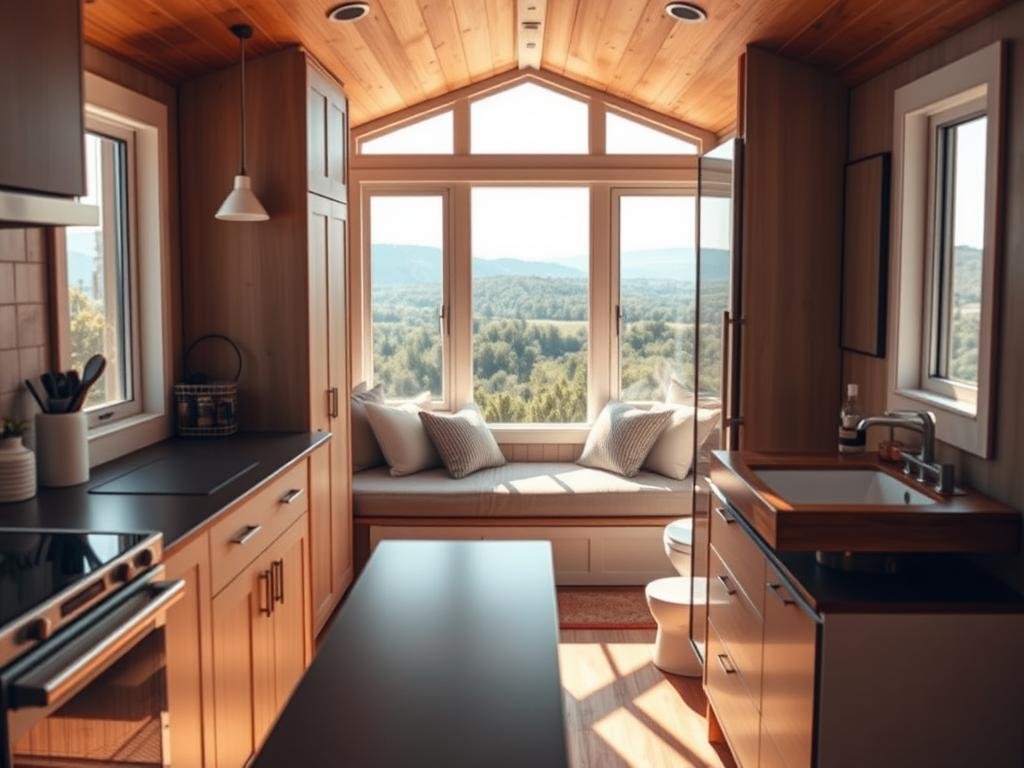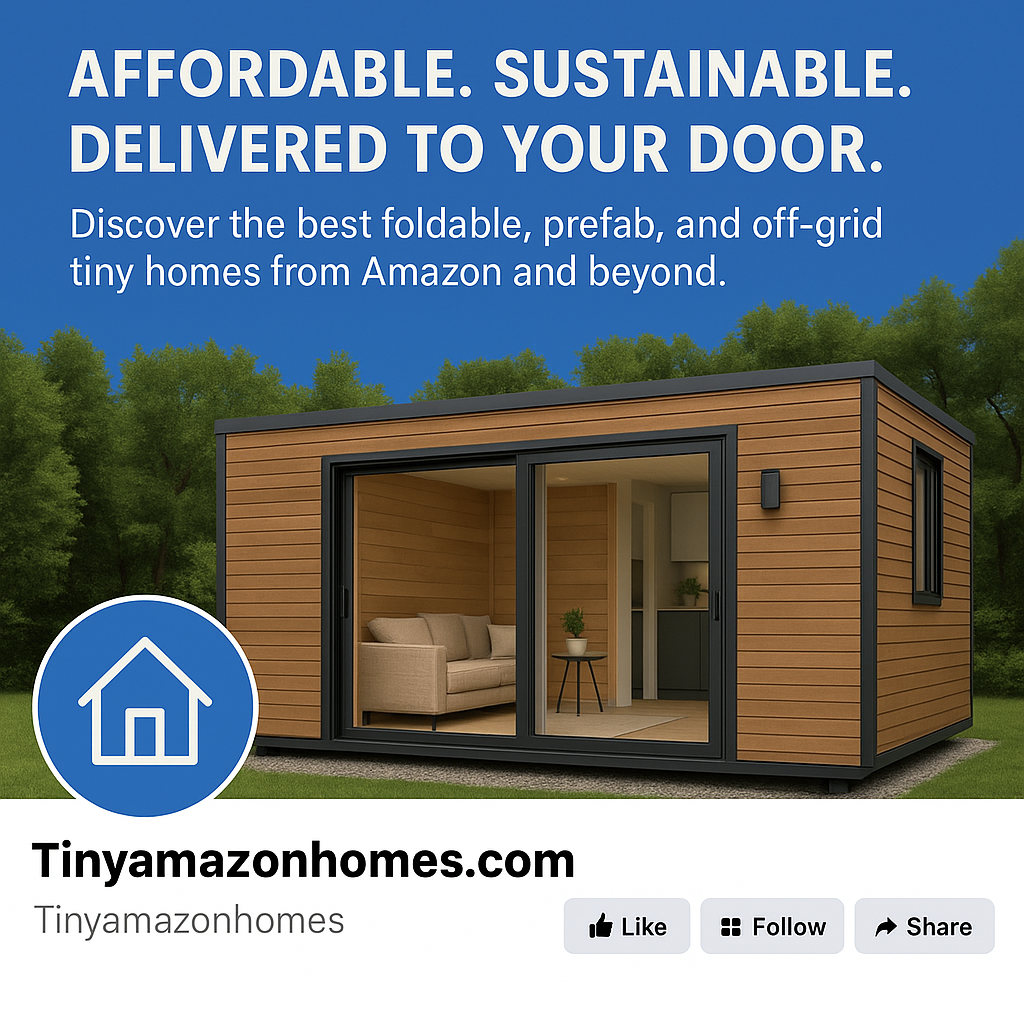Are you tired of cluttered spaces and always wanting more? Imagine living a simpler, more sustainable life in a compact, eco-friendly home. This home would help you connect more deeply with what’s truly important.
Embracing minimalist living is more than downsizing. It’s a shift towards living efficiently and sustainably. Tiny homes, built with these values in mind, let you simplify your life and lessen your impact on the environment.
Choosing a tiny home means more than picking a place to live. It’s about adopting a sustainable lifestyle that reflects your values. Check out our collection at tinyamazonhomes.com to see how you can start living more minimally and eco-friendly.
Key Takeaways
- Simplify your living space and reduce clutter
- Adopt a more sustainable and eco-friendly lifestyle
- Explore various tiny home designs that suit your needs
- Embrace the efficiency and simplicity of minimalist living
- Reduce your environmental footprint with compact dwellings
The Growing Appeal of Minimalist Living
In today’s world, where consumerism rules, minimalist living stands out as a fresh choice. People are tired of the mess and waste of modern life. The tiny house movement shines as a symbol of simplicity and green living.
Minimalist living isn’t just about getting rid of things. It’s a change in how we think about living. It means focusing on what truly matters and letting go of the rest.
The Philosophy Behind Minimalism
At its heart, minimalism is about simplicity and purpose. It’s about removing the unnecessary and finding a more meaningful life. This idea comes from the belief that owning less lets us live more freely and truly.
Living minimally has many benefits. For example, a study showed that it can greatly reduce stress and boost happiness.
From Consumerism to Intentional Living
The move from consumerism to living with purpose is key to minimalism. Consumerism promotes throwing away and excess, while living intentionally means being more careful with what we buy.
Choosing tiny homes is a bold statement against too much stuff. It’s a choice for a greener, more sustainable life.
| Aspect | Consumerism | Intentional Living |
|---|---|---|
| Consumption | Encourages buying and disposing | Promotes thoughtful consumption |
| Lifestyle | Focused on material possessions | Emphasizes simplicity and sustainability |
| Impact | Contributes to waste and pollution | Reduces environmental footprint |
How Tiny Homes Embody Minimalist Values
Tiny homes show what minimalist living is all about. Their small size and smart use of space prove you can live well with less.
By choosing tiny homes, people can see the benefits of minimalism. They save money and live more sustainably.
The tiny house movement is more than just a home. It’s a lifestyle that values simplicity, green living, and purpose.
Tiny Homes: The Heart of the Small Living Movement
Tiny homes are at the core of the small living movement. They meet various needs and tastes. These homes are about simplicity, being green, and being useful.
Evolution of the Tiny House Movement
The tiny house movement has changed a lot. It started as a way to find affordable housing. Now, it includes many designs and ideas.
Key milestones in the evolution include:
- The rise of eco-friendly and sustainable building practices
- Increased focus on mobility, with tiny homes on wheels gaining popularity
- Diversification of designs to suit different lifestyles and budgets
Types of Micro Houses Available Today
There are many types of micro houses today. They meet different needs and tastes. Some popular ones are:
- Tiny homes on wheels, for easy moving
- Stationary micro houses, built on land
- Micro apartments, for city living
- Yurts and other unique structures, for special experiences
- Average Costs and Size Considerations
When picking a tiny home, cost and size matter. Prices range from $20,000 to $100,000 or more. This depends on the design, materials, and features.
Size is also key, with homes from 100 to 400 square feet. Owners often use space-saving furniture and smart storage.
| Size Range (sq ft) | Average Cost | Typical Features |
|---|---|---|
| 100-200 | $20,000-$40,000 | Basic amenities, simple design |
| 200-300 | $40,000-$60,000 | Additional features like lofts, composite materials |
| 300-400 | $60,000-$80,000 | More spacious, potentially including full bathrooms and kitchenettes |
Resources from tinyamazonhomes.com
tinyamazonhomes.com is a great place to start for tiny home enthusiasts. It has designs, building tips, and forums. It’s perfect for those new to tiny homes.
With these resources, you can plan and build your tiny home journey.
Design Innovations in Compact Living Spaces
Compact living spaces are getting a makeover. Designers are focusing on making them efficient and green. The tiny home trend is growing, and with it, homes that are both useful and good for the planet.
Space-Maximizing Floor Plans
Designing tiny homes is all about using space wisely. Designers are coming up with creative floor plans. These plans include:
- Multi-functional furniture that does more than one thing
- Loft bedrooms and storage areas
- Open-plan living areas that feel bigger
These features help tiny homes feel roomy and cozy, even when they’re small.
Popular Aesthetic Styles
Tiny homes are not just practical; they’re also stylish. You’ll find homes in:
- Modern Minimalism: clean lines, simple shapes, and a few colors
- Rustic Charm: natural materials, earthy colors, and vintage touches
- Industrial Chic: exposed brick, metal, and reclaimed wood
Sustainable Materials and Features
Sustainability is key in tiny homes. They’re built with sustainable materials and eco-friendly features. Some examples are:
- Recycled and reclaimed materials for building and decor
- Energy-saving appliances and lights
- Systems for collecting and using rainwater and greywater
These features cut down on environmental harm, save money on bills, and make living better.
Technology Integration in Tiny Home Designs
Technology is changing tiny homes for the better. It makes them more comfortable, easy to use, and connected. Some examples are:
- Smart Home Automation: control lights, temperature, and security from afar
- Systems that track and improve energy use
- Fast internet and ways to stay connected
By using these tech advancements, tiny home dwellers get a better living experience.
Practical Realities of Tiny Home Ownership

Living in a tiny home is more than just loving simplicity. It means understanding the challenges that come with it. You’ll face legal hurdles, find ways to finance it, and keep it in good shape.
Legal Considerations and Zoning
First off, you need to know the law. Zoning rules change a lot, and not all places allow tiny homes. It’s crucial to research local zoning regulations to see if your tiny home can stay where you want.
Also, tiny homes are often seen as RVs or permanent homes. This can affect how you can park it and get financing.
Financing Options and Insurance
Getting a loan for a tiny home is harder than for regular houses. Banks might not know about tiny homes, so you might need personal loans or special tiny home financing.
Insurance is also tricky. Tiny homes move, so insurance is different. You need to find a provider that gets tiny homes, covering your home and stuff inside.
Maintenance and Upkeep
Because tiny homes are small, keeping them up is key. You can’t afford mistakes, so regular checks and quick fixes are a must.
Every part of a tiny home matters. From the roof to the pipes, keeping things in order is essential.
Adapting Your Lifestyle to Small Spaces
Adjusting to tiny living means changing how you live. It’s not just about having fewer things. It’s about living differently in a small space.
Going minimalist can free you up. It lets you focus on what’s important. But, you must be ready to simplify and use your space wisely. This way, tiny home living can be very rewarding.
Building Community in the Tiny House Lifestyle
The tiny house lifestyle is more than living in a small space. It’s about being part of a lively community. People who love simplicity and sustainability often find others who share their values.
Established Tiny House Communities Across America
In the United States, many tiny house communities exist. They give people a chance to live with others who think alike. These places vary from rural to urban, meeting different lifestyle needs.
Some examples include:
- Tiny house villages in Oregon, known for their eco-friendly designs and communal spaces.
- Urban tiny home communities in California, which offer a blend of simplicity and city living.
- Rural tiny house communities in Texas, where residents can enjoy vast open spaces and a strong sense of community.
Shared Resources and Collaborative Living
One big plus of tiny house communities is sharing resources. People share spaces like gardens, kitchens, and lounges. This builds friendship and teamwork.
| Shared Resource | Benefits |
|---|---|
| Communal Gardens | Provides fresh produce, encourages community interaction |
| Shared Kitchens | Reduces individual costs, promotes cooking together |
| Community Lounges | Offers a space for socializing, relaxation, and community events |
Online Networks and Support Groups
Online networks and support groups are also key in the tiny house lifestyle. They let people connect, ask questions, and share stories.
Popular online forums include:
- Tiny House Talk: A forum covering all things tiny house living.
- Tiny House Community on Facebook: A group with thousands of members, providing support and advice.
- The Tiny House: A website with articles, resources, and a community section for tiny house fans.
By joining both online and offline communities, tiny house dwellers can improve their lives. They build strong relationships and support a culture of simplicity and sustainability.
Conclusion: Taking the Leap into Tiny Home Living
Thinking about moving to a tiny home? It’s a big step that needs careful thought. Tiny homes can make your life simpler and help the planet.
Choosing a minimalist lifestyle and living sustainably can make you happier. Living in a tiny home lets you meet others who value simplicity and care for the environment.
With good planning, you can thrive in a tiny home. You’ll save money and feel closer to your community. Tiny home living is a choice for a more purposeful and joyful life.
